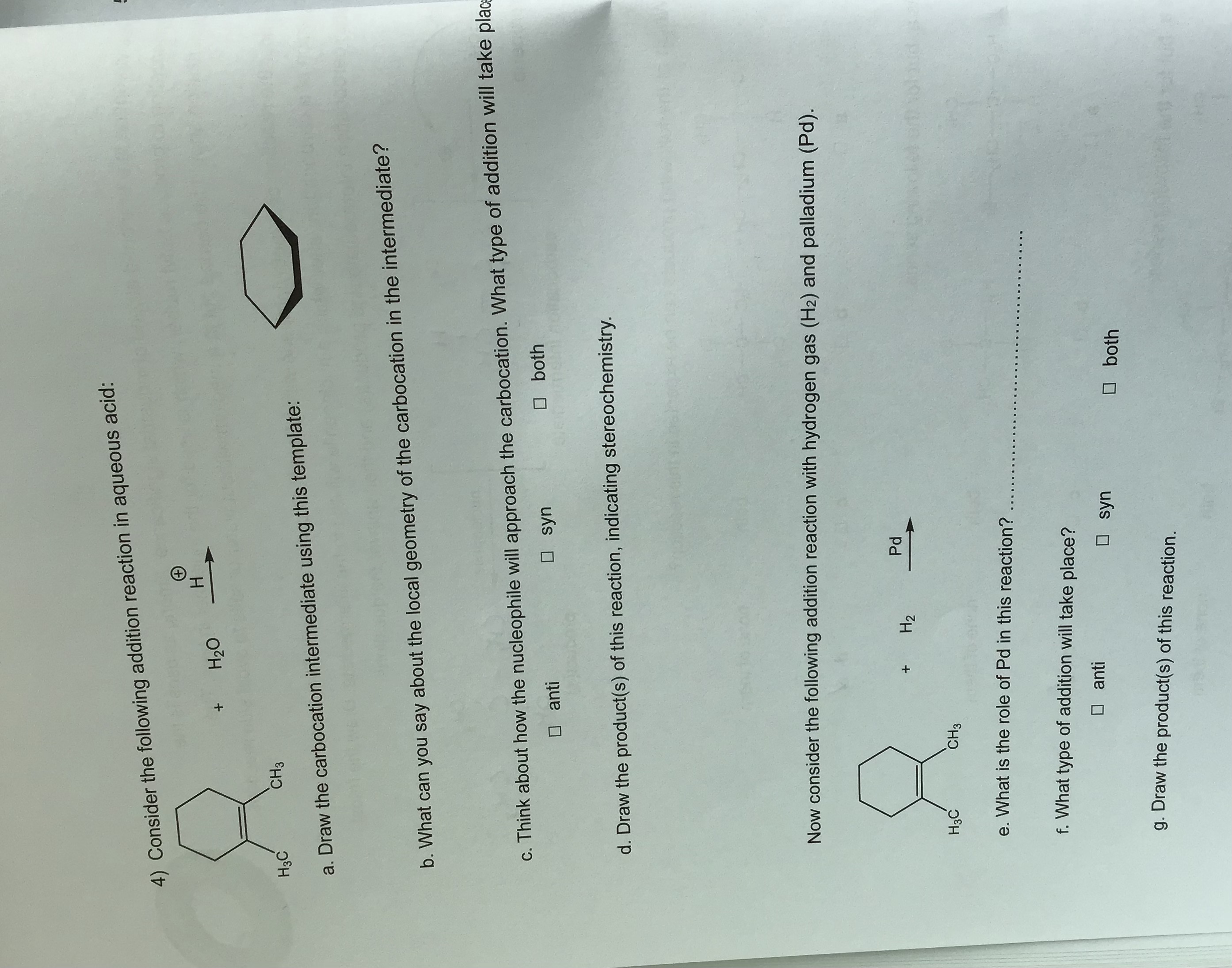Consider the following addition reaction in aqueous acid: [Reaction scheme] a. Draw the carbocation intermediate using this template: [Template] b. What can you say about the l... Consider the following addition reaction in aqueous acid: [Reaction scheme] a. Draw the carbocation intermediate using this template: [Template] b. What can you say about the local geometry of the carbocation in the intermediate? c. Think about how the nucleophile will approach the carbocation. What type of addition will take place: anti, syn, or both? d. Draw the product(s) of this reaction, indicating stereochemistry. Now consider the following addition reaction with hydrogen gas (H2) and palladium (Pd). [Reaction scheme] e. What is the role of Pd in this reaction? f. What type of addition will take place: anti, syn, or both? g. Draw the product(s) of this reaction.

Understand the Problem
The student needs help with an organic chemistry problem. The problem asks them to consider two different addition reactions. The first reaction is the addition of water to an alkene in the presence of acid (hydration). The second reaction is the hydrogenation of an alkene using hydrogen gas and palladium as a catalyst. The student is asked to draw intermediates and products, predict stereochemistry, and identify the role of the palladium catalyst.
Answer
Carbocation intermediate: trigonal planar geometry, syn/anti addition. Pd/H2 reaction: Pd is a catalyst, syn addition occurs.
a. The carbocation will be on the more substituted carbon. b. The local geometry of the carbocation is trigonal planar. c. Both syn and anti addition can take place. d. The products will be a pair of enantiomers (cis). e. Pd acts as a catalyst. f. Syn addition will take place. g. The product will be the result of syn addition of H2.
Answer for screen readers
a. The carbocation will be on the more substituted carbon. b. The local geometry of the carbocation is trigonal planar. c. Both syn and anti addition can take place. d. The products will be a pair of enantiomers (cis). e. Pd acts as a catalyst. f. Syn addition will take place. g. The product will be the result of syn addition of H2.
More Information
Carbocations are sp2 hybridized, resulting in trigonal planar geometry around the positively charged carbon atom. Palladium acts as a heterogeneous catalyst, providing a surface for the reaction to occur.
Tips
Ensure you draw the carbocation on the most stable (substituted) carbon. Remember that syn addition occurs on the same face of the molecule.
AI-generated content may contain errors. Please verify critical information